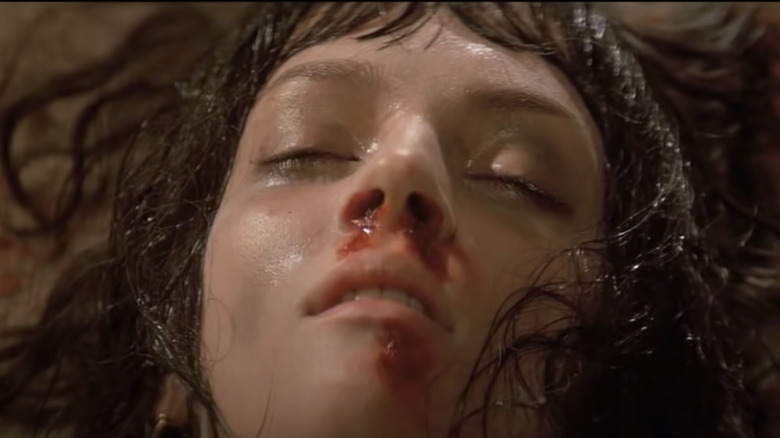The Needle Scene In Pulp Fiction Was Actually Filmed Backwards — Here's Why
Love him or hate him, Quentin Tarantino is one of the most influential figures in cinematic history. His trademark style and filmmaking techniques have boosted him to a level of auteurship, with an artistic expression combining wit, profanity, sex, pop culture references, gratuitous feet shots, and ultra violence. Tarantino's 1994 masterwork, "Pulp Fiction," is perhaps his style in its most streamlined form, and still remains as his arguably most popular film. It's home to his most identifiable characters, some of his most quotable lines, most memorable needle drops, and recognizable scenes.
In one of the most unforgettable moments, the magnificent Uma Thurman's Mia Wallace overdoses on heroin. Mia Wallace is considered one of the most iconic female characters of all time, and this is the role that earned Thurman nomination for the Academy Award for Best Supporting Actress, her first and currently sole Oscar nomination. During the scene in question, Mia overdoses after a night of dancing with Vincent Vega (John Travolta) and he desperately tries to revive her by plunging a syringe filled with adrenaline directly into her heart. The scene is equal parts thrilling and terrifying, and for anyone who has witnessed an overdose, painfully realistic. Tarantino ensured the actors were educated and trained on the realities of heroin usage and overdosing, but also chose to film the scene backward in order to make the scene appear as realistic as possible. It sounds silly, but it's a pretty genius way to shoot such a difficult scene ... here's why.
Backward Filming and Clever Editing
Tarantino is very open about his filmmaking inspirations, and "Pulp Fiction" is no different. Inspired by a scene in Martin Scorsese's documentary, "American Boy: A Profile of Steven Prince," Tarantino originally planned to have Travolta aim for the heart on a fake chest plate to be worn by Thurman. Full disclosure: epinephrine ("adrenaline") is not an effective treatment for opioid overdose because there are high risks of brain damage. It's a better treatment for cardiac arrest and allergic reactions, but adrenaline as an overdose treatment is risky. Regardless, Tarantino decided against the chest plate and chose to shoot the scene in reverse.
Travolta was directed to start with the needle at Thurman's chest, and then pulled upward and away with severe intensity, and played the footage in reverse in the edit. When the needle is supposed to make contact with Thurman, the camera instead cuts to Thurman's face as she shrieks for air, with a solid "thud" sound tricking the audience's brain into believing the needle was actually plunged into her body. She then panics back to consciousness, the syringe still hanging out of her skin. It's a clever filmmaking technique, and one that adds a level of realness that wouldn't have been comparable had he gone the route of a fake chest plate.
